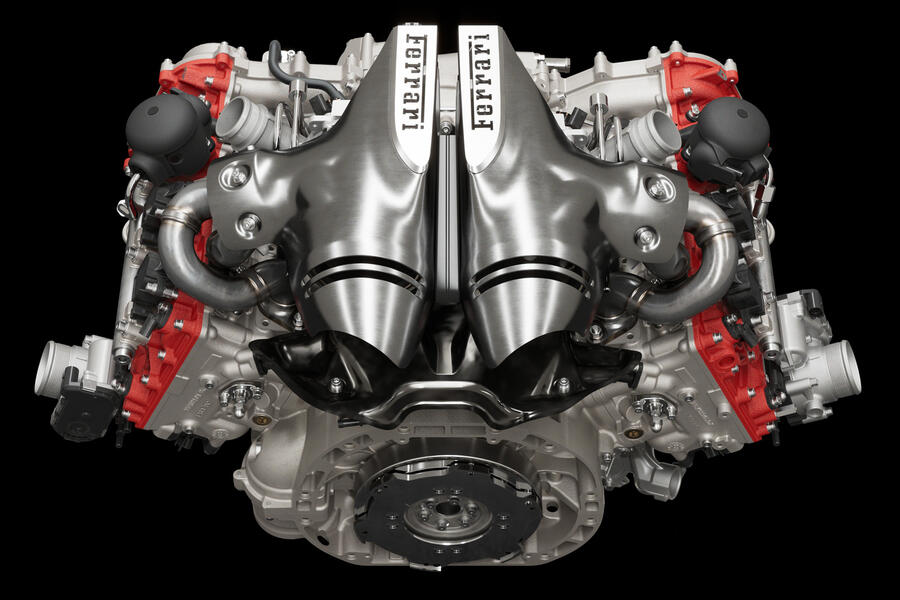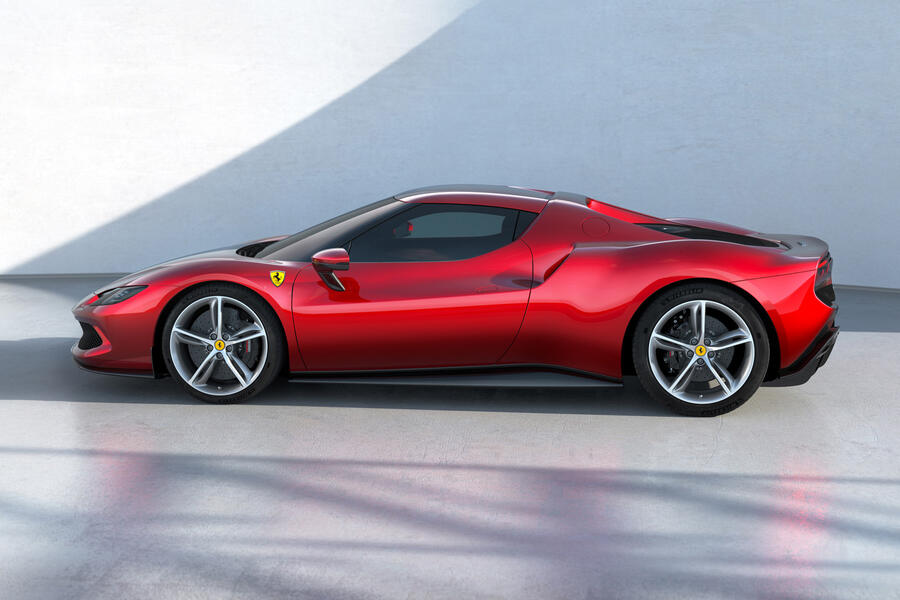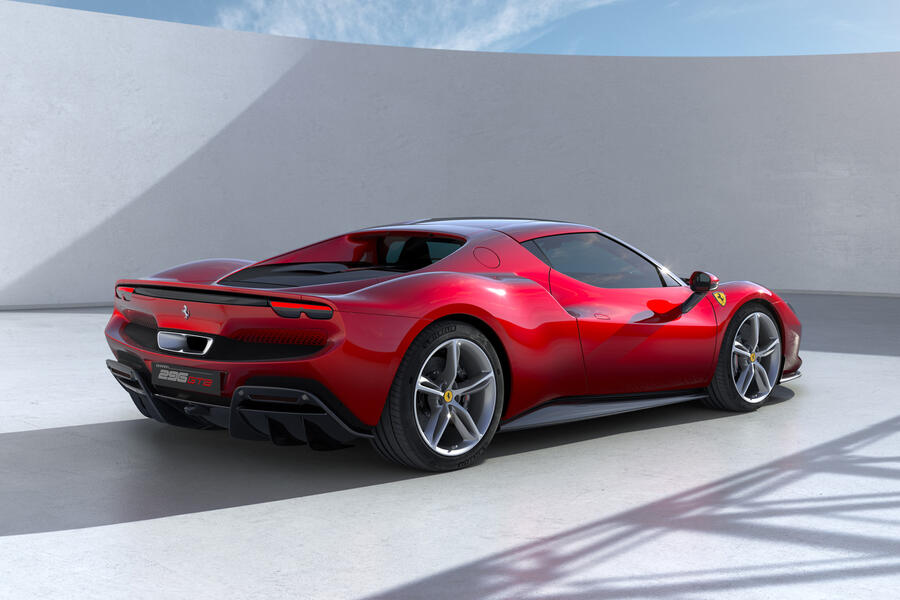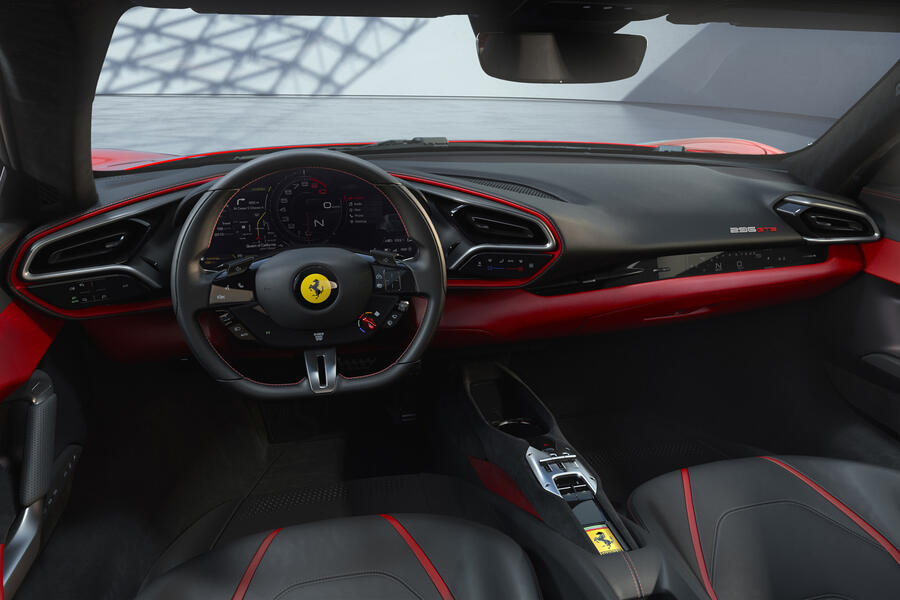Ferrari has unwrapped the new 296 GTB as the latest entry into its Berlinetta sports car family, with an all-new hybridised V6 engine arriving in place of the traditional mid-mounted V8.
The new model arrives to complement the F8 Tributo, which will leave production in 2022 once all customer cars have been delivered. This makes the 296 GTB Ferrari's first 'mainstream' electrified offering, after the LaFerrari and SF90 Stradale halo hybrid hypercars.
Its numerical designation is a reference to its 2996cc six-cylinder engine, while the Gran Turismo Berlinetta moniker establishes it as the latest in a long line of Ferrari sports cars that stretches back to the mid-1950s.
Ferrari's switch from V8 to V6 power for its core sports car line mirrors that of rival McLaren earlier this year, with the Artura V6 plug-in hybrid arriving to replace the Sports Series model family.
Prices and availability details for the 296 GTB have yet to be confirmed, but they're expected to more closely match those of the F8 Tributo than the SF90 Stradale.
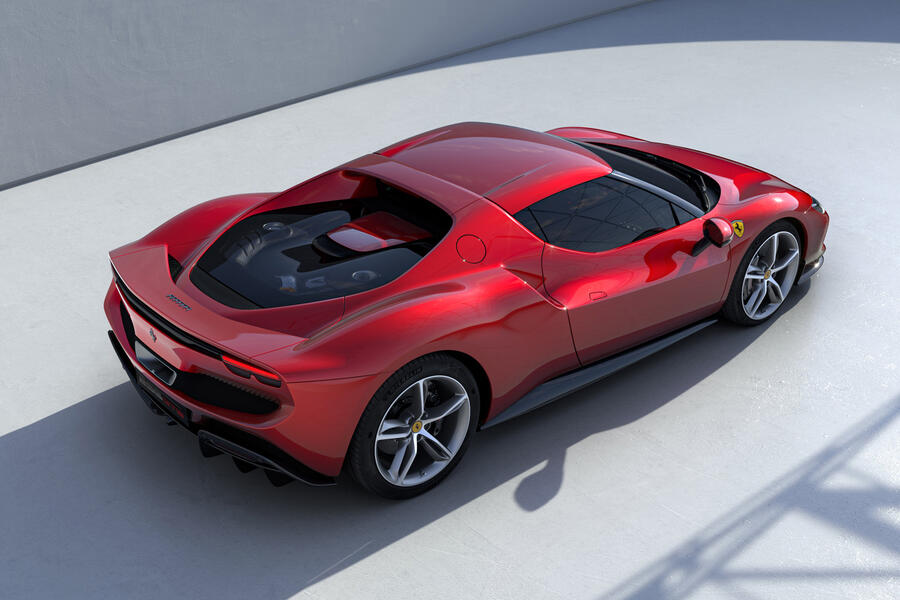
Powertrain
The V6 engine at the heart of the plug-in hybrid powertrain is described as the first "six-cylinder engine installed on a road car sporting the prancing horse badge". Maranello used a V6 for entry-level sports cars during the 1960s and 1970s, but these were marketed as part of its dedicated and now long-defunct Dino brand.
The 296 GTB's twin-turbocharged 3.0-litre unit – an all-new and bespoke powerplant developed in-house by Ferrari – produces 654bhp, which is equivalent to 218bhp per litre - said to be a record for a production car.
In a first for Ferrari, the turbochargers, which can spin up to 180,000rpm, sit between the cylinder banks – a layout chosen for its more compact packaging, lower centre of gravity and reduced engine mass.
The aluminium block's wide-angle 120deg configuration also means the turbos can sit centrally, shortening the distance to the combustion chamber for maximum intake efficiency.
Despite its forced aspiration and relatively small size, the new V6 is claimed to emit "the harmony of the high-frequency notes of a naturally aspirated V12", as used by Ferrari's top-rung GT models.
